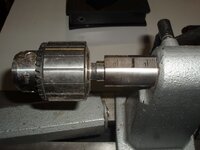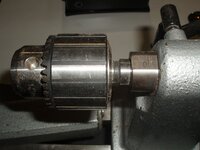My experience on this subject is a bit limited - I've only owned two lathes, one an MT1 and the other an MT2, and while I have used the same Jacobs chuck with both, I swapped out the arbor when I switched to the larger lathe. So its not really possible to compar how they worked in this regard. I've definitely noted that on the larger machine, the point on the quill extension where the morse taper 'grabs' is definitely different from the point where it releases. In my case, it seems to grab very close to the zero point on the calibration marks engraved on the quill, but I have to withdraw the quill a good quarter of an inch further before it ejects the taper.
I'm going to go out on a limb here and suggest that unless the Jacobs chuck and its arbor were made by the same manufacturer as the lathe, it might be merely a matter of coincidence that the grab and release points coincide with the index point on the quill calibrations.
My experience also is that I can't always rely on the calibrations on the quill to indicate how deep I've drilled a hole. Part of the reason for this is that the tailstock can slip while drilling. I find that the old fashioned methods of either measuring the depth of the hole, or else measuring and marking the desired depth on the drill bit are far more reliable.
Richard Kleinhenz suggested that it was helpful to know the amount of quill extension that results from one revolution of the tailstock handwheel. I've made that measurement on my lathe, but I still find that actually measuring the depth is a more reliable method.



